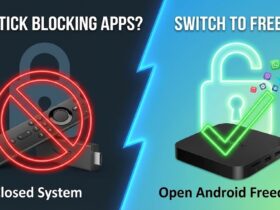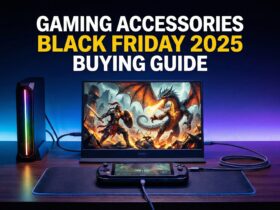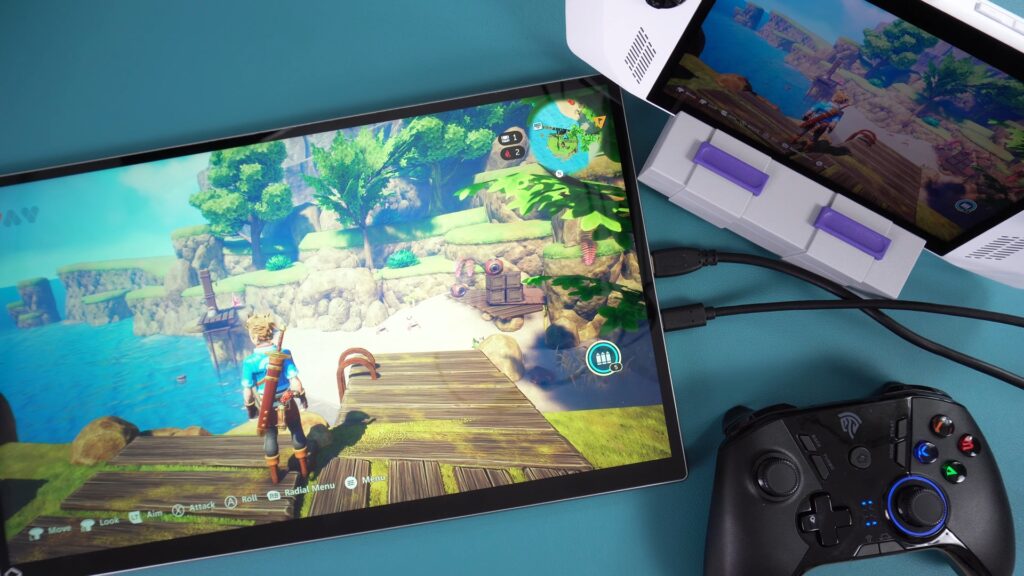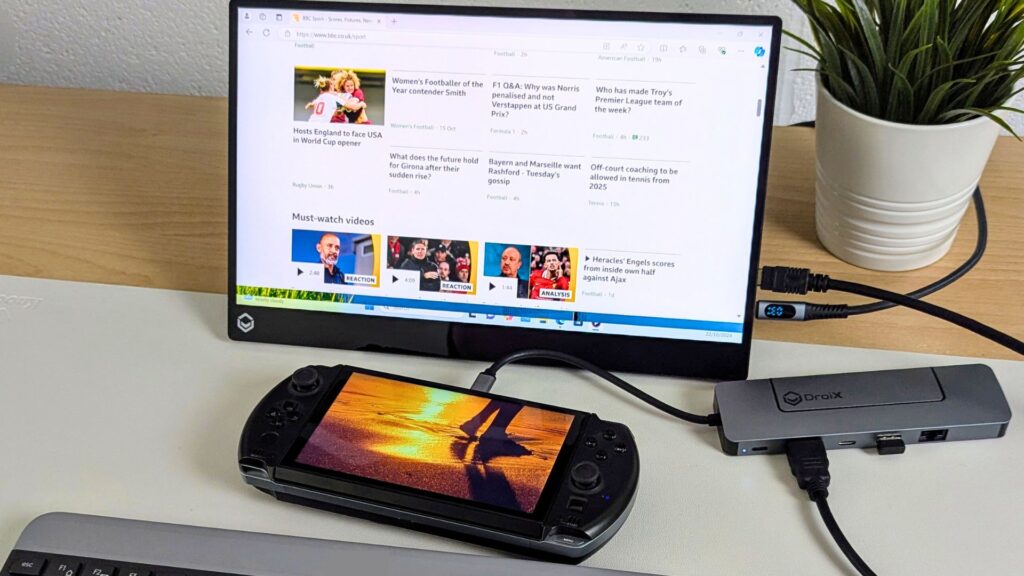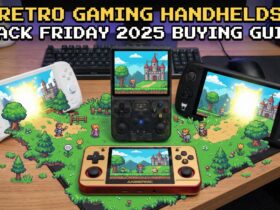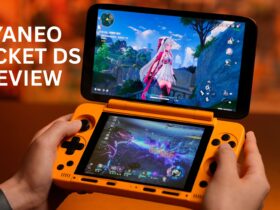The freedom of gaming on a portable gaming computer or a sleek Android gaming handheld is unparalleled, allowing you to dive into virtual worlds wherever you roam. But what happens when you return home, or arrive at a hotel, and crave the expansive immersion of a large television display? The good news is, transforming your pocket-sized powerhouse into a big-screen gaming rig is often surprisingly straightforward through wired connections! This comprehensive guide will illuminate the essential methods, optimal settings, and recommended accessories to seamlessly bridge the gap, turning your handheld into a console-like experience on any television. Mastering handheld to TV connectivity means unlocking new dimensions for your portable gaming.
Whether you wield a powerful Windows-based handheld gaming PC or a versatile Android gaming device, the desire to experience your favourite titles on a larger display is universal. It elevates single-player sagas into cinematic events, turns competitive multiplayer into a shared spectacle, and breathes new life into cherished retro classics. We’ll explore the various ways to achieve this through direct cabling and advanced docking, ensuring your mobile gaming PC can deliver an impressive big-screen performance. Get ready to unlock the full potential of your portable device, bringing your games from the palm of your hand to the living room screen, all thanks to robust handheld to TV connectivity.
Direct Connections: The Reliable Cable Route for Handheld to TV Connectivity
The most common and reliable method for connecting your portable gaming computer or gaming Android handheld to a television or external monitor is via a direct cable. This typically involves using the USB-C port on your device, which often supports video output (DisplayPort Alternate Mode).
USB-C to HDMI Cable
This is the simplest and most widely compatible approach for many modern handhelds. You simply plug the USB-C end into your device and the HDMI end into your TV. This works well for many PC handhelds like the GPD WIN 4 2025 or the ONEXPLAYER X1 Pro, and Android devices like the AYN Odin2 models. While straightforward, a standalone cable might mean your device isn’t charging while connected, which can be an issue for longer gaming sessions, especially on more power-hungry titles. Look for cables that support 4K@60Hz for the best visual experience.
Example Usage: Ideal for a quick plug-and-play session at a friend’s house, or when space is at a premium. Simply connect your GPD WIN 4 2025 to a hotel TV for some casual gaming without setting up a full dock.
USB-C to USB-C Cable (Direct Monitor Connection)
For truly minimalist setups, some modern portable monitors and even larger displays support video and data input directly via a single USB-C cable such as the DROIX USB 4.0 Type-C cable. Monitors such as the DROIX PM14 are designed with USB-C input for both video signal and power delivery, meaning you often do not need a separate hub and can plug a single USB-C to USB-C cable straight from your handheld gaming computer (like the GPD WIN Mini 2025 or AYANEO 3) into the monitor. This transforms your setup into a clean, powerful dual-screen workstation or gaming station, demonstrating seamless handheld to TV connectivity.
Example Usage: Setting up a compact battle station on a small desk by connecting your GPD WIN Mini 2025 directly to a DROIX PM14 portable monitor with just one cable, creating an instant extended display for work or a larger gaming canvas.
USB-C Hubs/Adapters
A step up from a simple cable, a USB-C hub typically offers an HDMI port along with additional USB-A ports and often a USB-C Power Delivery (PD) passthrough port. This allows you to charge your handheld gaming computer while it’s connected to the TV, simultaneously connecting external peripherals. These compact accessories are fantastic for travellers who need versatility without bulk.
A great example is the DROIX NH8 USB hub with NVme. They typically feature multiple USB ports for peripherals, Ethernet for stable wired internet, and various video outputs for monitors. The NH8 also has space inside for a SSD to expand the storage.
Example Usage: Connect your AYANEO 3 to a hub, then plug the hub into your TV via HDMI, an external power brick into the hub’s PD port, and perhaps a small wireless keyboard and mouse dongle into the USB-A ports. This transforms your compact gaming PC into a functional desktop setup on the TV screen.
Dedicated Docking Stations: Unleashing Full Desktop Potential
For the ultimate desktop-like experience and maximum performance, a dedicated docking station is often the best choice for a portable gaming PC. These are designed to cradle your device and typically offer a full array of ports: multiple USB-A, HDMI, DisplayPort, Ethernet, and robust power delivery.
Standard Docking Stations
These provide essential connectivity for turning your mobile gaming PC into a desktop replacement. A great example is the GuliKit 7In1 Steam Deck Docking Station which is not only compatible with the Steam Deck but a range of other handheld devices.
Example Usage: Transforming your GPD WIN MAX 2 2025 into a powerful home console. Dock the device, connect it to your 4K TV, plug in a wired Ethernet cable for stable online play, and use an Xbox Wireless Controller connected via Bluetooth or a USB dongle. This provides a truly seamless, high-fidelity experience that rivals traditional consoles.
eGPU Docking Stations (External Graphics Cards)
For unparalleled graphical performance, eGPU docking stations are a game-changer. These advanced docks house a dedicated, powerful external graphics card that significantly boosts your handheld’s processing power, ideal for demanding AAA titles or intensive tasks like video editing and 3D rendering. They also come packed with additional ports, showcasing advanced handheld to TV connectivity.
Leading examples include the GPD G1 (review here), ONEXPLAYER ONEXGPU (review here) & ONEXPLAYER ONEXGPU 2 (review here), and the AYANEO AG01 (review here). These devices typically connect via high-bandwidth ports like OCuLink or USB4, transforming your handheld gaming computer into a full-fledged desktop beast. They offer a multitude of display outputs (often multiple HDMI and DisplayPort for multi-monitor setups), numerous USB ports for all your peripherals, and often integrated Ethernet.
Example Usage: Connecting your ONEXPLAYER ONEXFLY F1 Pro to an ONEXPLAYER ONEXGPU 2 eGPU dock. You can then run your favourite games at much higher settings and frame rates on a large 4K monitor, while simultaneously connecting a gaming keyboard, mouse, and external SSD, making your portable gaming computer feel like a powerful custom-built desktop. This truly unlocks the highest level of performance for your compact gaming PC via robust handheld to TV connectivity.
Optimising the Experience: Settings for Seamless Play
Connecting your portable gaming computer to a TV is one thing; optimising it for the best possible experience is another. Pay attention to these settings for true handheld gaming computer immersion, ensuring flawless handheld to TV connectivity:
Resolution and Refresh Rate
Most handhelds can output at least 1080p (Full HD), and many support 4K resolution output. Ensure your TV input is set to the correct resolution (e.g., 4K@60Hz or 1080p@120Hz if your TV and handheld support it). For PC handhelds, access Display Settings in Windows; for Android devices like the AYANEO Pocket ACE, check the system display output options. Matching the TV’s refresh rate to the game’s frame rate (or a multiple thereof) can significantly improve visual smoothness.


Upscaling for Enhanced Visuals
To make games look even better on a large screen, consider utilising upscaling technologies. For modern PC titles, techniques like AMD FidelityFX Super Resolution (FSR), Intel Xe Super Sampling (XeSS), or NVIDIA DLSS (where supported by the game and hardware) can render games at a lower internal resolution and then intelligently upscale them to your TV’s native resolution, providing sharp visuals with a performance boost. For older, retro titles, emulators offer sophisticated internal resolution upscaling which can dramatically improve the clarity of 3D graphics on a large screen. Pixel-perfect integer scaling and various shaders can also breathe new life into 2D pixel art. For an in-depth dive into these techniques, be sure to read our dedicated guide on Retro Gaming Display Optimisation.
Aspect Ratio Correction
Older retro games (and some indie titles) are designed for a 4:3 aspect ratio. When connecting to a 16:9 TV, ensure your emulator or handheld’s display settings are configured to maintain the correct aspect ratio, typically by adding black bars to the sides (letterboxing). This prevents stretching the image horizontally and preserves the original art style.
TV Game Mode
Most modern televisions feature a “Game Mode” which, when enabled, reduces input lag by bypassing post-processing effects. Always activate this mode on your TV’s picture settings for the HDMI input your handheld is connected to. This is crucial for responsive gameplay, especially for fast-paced titles.
The Handheld Gamer’s Big-Screen Toolkit: Recommended Accessories
To truly elevate your big-screen portable gaming computer experience, a few key accessories are indispensable for robust handheld to TV connectivity:
High-Quality USB-C Hubs/Docks
Look for models with USB Power Delivery (PD) passthrough (100W recommended), HDMI 2.0/2.1 or DisplayPort, multiple USB-A ports, and ideally an Ethernet port for stable internet. Brands like DROIX offer excellent accessories options compatible with devices like the ONEXPLAYER ONEXFLY F1 Pro and the AYANEO 3.
External Controllers
While handhelds have built-in controls, a dedicated full-sized controller (like an Xbox Wireless Controller or a PlayStation DualSense) offers superior ergonomics and precision for long sessions on a TV. Connect via Bluetooth or a USB dongle to your dock/hub.
High-Speed HDMI Cables
Ensure your HDMI cable supports the resolution and refresh rate you desire (e.g., HDMI 2.0 for 4K@60Hz, HDMI 2.1 for 4K@120Hz).
Portable Power Bank (with PD)
Even if using a dock with passthrough charging, a high-capacity power bank with USB-PD can be a lifesaver for truly extended sessions or when playing where power outlets are scarce.
Conclusion: Expanding Your Gaming Horizons
Connecting your portable gaming PC or gaming Android handheld to a television unlocks a new dimension of play, blending the convenience of portability with the immersive scale of a big screen. From simple direct cable setups to sophisticated eGPU docking solutions, the options for enhanced handheld to TV connectivity are varied and accessible. By understanding the wired connection methods, optimising your display settings (including crucial upscaling techniques), and investing in key accessories, you can transform your handheld gaming computer into a versatile console-like experience, ready to entertain you and your friends in the living room, a hotel, or wherever a TV awaits.
What are your preferred wired methods for connecting your handheld gaming computer to a TV? What unique setups have you created for big-screen play with your mobile gaming PC or gaming Android handheld? Share your experiences and tips in the comments below!




